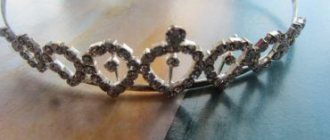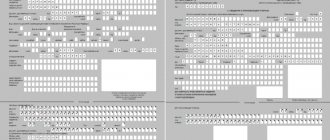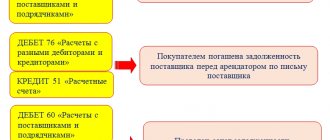Home / Complaints, courts, consumer rights / Consumer rights
Back
Published: 10/03/2018
Reading time: 8 min
0
607
A jewelry quality guarantee ensures the rights of consumers when a defective product is discovered, so you need to think about it before making an expensive purchase.
- How to return jewelry under warranty?
- What to do if the seller does not return the money?
Legislation will help you understand the warranty rules for the desired decoration:
- Law on the Protection of Consumer Rights dated 02/07/1992 No. 2300-1 (hereinafter referred to as the Law);
- Industry standard “Jewelry made from precious metals” OST-117-3-002-95.
The warranty period is set by the manufacturer of the jewelry or the seller (clauses 6, 7, Article 5 of the Law). If during this period the consumer discovers defects in the purchase, he has the right to demand:
- replacement of goods;
- refund;
- reducing the cost of decoration;
- repairs;
- compensation for the costs of correcting defects in the goods.
When determining the duration of the warranty period, the manufacturer can rely on the Industry Standard OST-117-3-002-95. In clause 6.2 of this document it is proposed to consider 6 months as the period for detecting hidden defects, for which the manufacturer is responsible.
The law provides additional protection beyond the manufacturer's warranty period. In accordance with clause 6. Art. 18, as well as pp. 1.5 tbsp. 19 of the Law, a consumer may make a claim for defects in a product if the warranty has expired or has not been established, but:
- at the time of discovery of the defect, less than two years must have passed from the date of purchase;
- there is evidence that the defect arose before the purchase of the jewelry.
The warranty period is counted from the date when the buyer received the goods (Clause 2 of Article 19 of the Law).
The warranty does not apply to defects that occurred due to the fault of the buyer, for example, if he violates the rules for storing the ring or uses the bracelet for other purposes (clause 6 of Article 18 of the Law).
The warranty does not give the buyer the right to exchange or return the jewelry if it is of proper quality. For example, a husband who decided to give his wife earrings to match the color of her eyes and did not guess with the shade will not be able to refuse the jewelry, because:
- Returns under warranty apply only to defective purchases.;
- jewelry is included in the list of goods that cannot be returned to the store if the consumer has no complaints about their quality (Resolution of the Government of the Russian Federation of January 19, 1998 No. 55).
Is there a warranty for jewelry?
Any durable item may have a period during which the manufacturer or seller guarantees the quality of their product. However, establishing a warranty period is not an obligation, but a right of the manufacturer. But this does not mean that in this case the product cannot be returned if a defect is found in it. Firstly, there is a legal framework within which a low-quality product can be returned. In addition, the product may have a service life. These notes are prescribed in legal regulations (Article 5 “Law on the Protection of Consumer Rights”).
Attention! If you have any questions, you can chat for free with a lawyer at the bottom of the screen or call Moscow; Saint Petersburg; Free call for all of Russia.
What to do after discovery?
The most important thing is that under no circumstances try to return the product to its original form . somehow fix it yourself. This automatically confirms your intervention and involvement in changing the appearance of the product and makes it almost impossible to prove the manufacturer’s guilt. This means no need to try to straighten the ring, glue the stone back if it fell out, or cover up a scratch.
Carefully place the goods in a bag (cellophane bags with a plastic zipper are ideal), if there are missing parts and they are not lost, be sure to put them in too.
Where to go?
To begin with, resolve the issue at the level of the relationship between the consumer and the seller. Go to where you bought the jewelry and make your claim first in words, calmly and politely defending your position.
There is a small chance that the seller will meet you halfway - most often this is what large chain stores do, who do not want to jeopardize their reputation due to a return, which can always turn into a scandal.
All this only matters if you have a receipt or credit card statement. If you do not have confirmation of the deed of sale, you can still claim protection of your rights in theory, but in practice this is difficult to achieve.
You cannot legally be refused a return if less than six months have passed since the date of purchase. The selling party is obliged to accept the claim . If the seller ignores you, you can still try to contact the manufacturer directly before filing a complaint with the authorities. The claim and the results of the examination are also sent to him. Having failed to achieve a result here, the victim has two options - contact the consumer rights protection service or directly to the court by writing a statement.
What should you prepare?
It is necessary to keep the product itself as untouched as possible (you cannot give it anywhere before the return procedure, only for an independent examination), and also collect as much evidence as possible that the purchase was made by you in the store to which you now have complaints. This is a receipt or warranty card if the store issued it.
If you lose your receipt, you can try to use an extract from your credit card payment history as evidence. If the payment was made in cash, the chances of success in the absence of a check are minimal.
Making a claim
A claim is an official request for satisfaction of one’s consumer rights addressed to the responsible person on the selling side. Typically, such documents are written in the name of the executive director of a particular store or the owner of the enterprise, if we are talking about a chain of stores. In order for the claim to have legal force, it must be drawn up correctly and indicate everything necessary to complete the return process:
- A detailed description of all defects found by the consumer on the product.
- The essence of the claim and demand to the seller is that it is necessary to clearly indicate what the victim wants: compensation for damage, exchange of goods for a high-quality analogue, etc.
- The full name of the person to whom the claim is directed, as well as the name of the seller’s organization, must be written correctly and completely.
We do not recommend completing the documents yourself. Save time - contact our lawyers by phone:
8 (800) 302-76-94
If these document requirements are not met, the manufacturer or seller may ignore it without incurring any liability to the consumer. Moreover, while you waste time waiting for a response to a claim that has no legal force, the chances of resolving the conflict in your favor are reduced.
Is the examination mandatory and at whose expense is it carried out?
An examination must be carried out . The only exceptions are those rare cases when the seller agrees to return the money without litigation. In all other cases, an expert opinion is very important, since the victim himself, due to lack of specialized knowledge, may not know that he himself is the culprit of the marriage.
The expert examines the product and concludes how and at what stage the damage was caused to it. This is possible thanks to complex production technology, all stages of which a professional can track later, months and even years later. The examination is carried out at the expense of the client, but in the event of litigation, he can obtain compensation for these losses from the seller or manufacturer.
Will the results of the examination come soon?
Before providing their services, an expert or an expert center must announce the time frame within which the work will be ready.
Each such person (individual or legal entity) providing services for conducting expert analysis has the right to set its own terms, which are completely arbitrary. To be competitive in the market, the deadline is usually set around 3-5 days.
Normative base
- The main document regulating the relationship between buyer and seller is Law No. 2300-1 “On the Protection of Consumer Rights”. It is this regulatory act that provides for the rights of manufacturers (sellers) to set a warranty period for goods, requirements for repairs or replacement of jewelry.
- In addition, the Industry Standard “Jewelry Made from Precious Metals” OST-117-3-002-95 applies to jewelry. The Standard provides information about what kind of jewelry can be called high-quality. If you have any doubts about the usefulness of your purchase, you can refer to this document. This will be required to clarify that a particular piece of jewelry meets the standards.
- The Civil Procedure Code of the Russian Federation helps when filing a claim in court against an unscrupulous seller. In particular, Chapter 3 of the Code of Civil Procedure of the Russian Federation gives a hint on how to determine the correct jurisdiction to consider a case involving the return of goods of inadequate quality.
What is a jewelry warranty?
The warranty for jewelry refers to the period during which the consumer can return the product to the manufacturer or seller if a defect is detected, and the persons receiving the item are obliged to satisfy the buyer’s requirement (Article 5 of Law No. 2300-1).
According to clause 1 of Article 18 No. 2300-1, if the jewelry has become unusable during the warranty period, then the consumer has the right to contact the store with the requirement:
- exchange jewelry for a similar one;
- replace with another piece of jewelry and recalculate the cost;
- demand a markdown;
- repair a defective item;
- demand reimbursement of expenses if the buyer independently repaired the product;
- refuse the jewelry and return the money paid for it.
Sellers' tricks
Not wanting to lose the profits they have made, many sellers are ready to try to deceive the buyer. After all, very often people do not know their rights, which is what cunning sellers take advantage of. Most often, the refusal to accept back a defective product is explained by the fact that it is included in the category of those goods that cannot be exchanged or returned. However, you are already aware that a defective product can be returned under warranty.
But here, too, the seller finds the reason for the refusal, saying that the warranty period of the product has expired and the buyer no longer has the right to exchange or return the previously purchased product. Remember an important point: the warranty from a jewelry store can never be less than that established by the product manufacturer itself.
Before you agree and leave, it's worth checking what kind of warranty the jewelry has on the tag. You should also look at the date of manufacture. It may be useful if there is no warranty period. This happens, but very rarely. According to the law, the warranty on the jewelry in this case will be ten years.
Warranty period for jewelry
The manufacturer establishes a 6-month warranty period for identifying hidden defects in jewelry (clause 6 of OST-117-3-002-95). This period begins to apply immediately from the date of purchase of the item.
According to Law No. 2300-1 (Article 19), if the warranty period has not been determined or is less than two years, the consumer can make claims for a product of inadequate quality within up to 2 years after purchase.
For your information
A service life may also be specified for the product. During this period, the store is also responsible for its products. This means that if the buyer discovers a defect in the decoration, the seller must eliminate the defects at his own expense. If there is no service life, then the law provides a 10-year guarantee for the jewelry product (Clause 6, Article 29 of Law No. 2300-1).
Standards provided for in the consumer protection law
Federal law regulates not only the right of return, but also the requirements for jewelry products. If the item does not correspond to them, it can be taken back to the salon. The following standards apply to jewelry:
- sample is required (does not apply to goods weighing less than 3 grams);
- Russian jewelry must have the imprints of the names;
- sales of precious stones are carried out if there is a certificate;
- Jewelry with precious stones is equipped with individual packaging;
- If the client wishes, a control weighing can be carried out before sale;
- The receipt contains information about the sample, precious metals and stones, and the article number.
In addition, the label indicates the name, information about the manufacturer, processing method, and cost. If the product is decorated with a non-precious stone, information about it is entered.
Jewelry products are covered by a warranty, just like equipment. You can return a defective item within 2 years, unless the manufacturer specifies a different period. Defects include:
- absence of a sample or its discrepancy with the information indicated on the label;
- loss of precious stones and other inserts;
- broken links of a chain or bracelet;
- jamming of the lock, etc.
Read also: Dog walking law in 2021
What jewelry can be returned?
Jewelry is included in the List of non-food products of good quality that are not subject to exchange or return in accordance with Decree of the Government of the Russian Federation dated January 19, 1998 No. That is, if the purchase meets all standards, then it cannot be returned to the seller just because you no longer like the item. Jewelry that has been found to be defective must be returned. Poor quality jewelry can be sent for repair, returned to the store or exchanged.
According to the law, jewelry is returned to the seller if the following defects are present:
- discrepancy between the declared sample for jewelry and the absence of a test mark;
- loss of inserts and stones in the product;
- breakdown of the watch during the warranty period;
- defect in chain links (bracelets, chains):
- the lock, clasp or the entire decoration itself is broken.
Which equipment to choose
Retail outlets that sell jewelry made from precious metals must have a barcode scanner and a cash register connected to the Internet for online operation. Each performed operation is automatically recorded in the unified accounting program simultaneously with the check issuance - the data is received through the fiscal operator.
When choosing a cash register, the priority criteria are sales volumes and the intensity of customer traffic. For small stores with a calm flow, a simple cash register or smart terminal is sufficient, while large companies are recommended to purchase and install complex POS systems that allow you to connect auxiliary peripheral devices. The purchase of a terminal also involves registration with the Federal Tax Service and execution of an agreement with the OFD.
How to return or exchange jewelry under warranty?
If a defect is discovered in a piece of jewelry, you first need to make sure that the warranty period of the product has not expired and that the defect was not caused by the buyer.
To return jewelry under warranty, you must:
- Contact the store with a written request for the transfer of low-quality jewelry. The application must be accompanied by a cash receipt or other documents that are proof of the purchase from this seller (receipt, warranty card, tag, packaging). The claim is drawn up in 2 copies.
- Submit an application with supporting documents to the seller. At the same time, on the copy of the complaint, the store employee puts a mark indicating acceptance of the complaint: the seal or stamp of the organization, the signature of the employee and the date of presentation of the complaint. If it is impossible to come to the store, the buyer can send his appeal by registered mail with notification.
- If a store employee has doubts about the origin of a defective piece of jewelry, the seller has the right to conduct a quality check or an independent examination of the jewelry at his own expense. In this case, the buyer can attend the assessment of the condition of the goods and, in case of disagreement with the expert’s conclusions, challenge the inspection in court (clause 5 of Article 18 of Law No. 2300-1).
- If the consumer's complaint is satisfied, the seller must return the money paid by the buyer for the jewelry no later than 10 days from the date of presentation of the relevant requirements (Article 22 of Law No. 2300-1).
How to donate jewelry: step-by-step instructions
Regardless of whether there is a guarantee for gold products, if a manufacturing defect is found, the store is obliged to accept them back and return the money or exchange them for analogues. To do this, the buyer needs:
- conduct an examination and obtain an opinion;
- make a written claim describing the decoration and defect, a copy of the expert’s opinion, the desired compensation and the timing of its receipt;
- send it by registered mail to the store’s address;
- keep the delivery notice: it will be needed in case of legal proceedings;
- receive compensation;
- If the seller does not respond to the letter within the specified time frame, file a lawsuit.
About the author of the article
Evdokia Gazizova
Application for return of jewelry under warranty
If a piece of jewelry has become unusable, but the warranty period for it has not yet expired, the consumer has the right to contact the store to return the defective product. To do this, you must make a written claim to the seller. An application for the return of jewelry under warranty must contain the following data (Article 7 of Federal Law No. 59).
- In the upper right corner of the sheet, write down the full name of the organization where the purchase was made, full name. leader.
- Next, indicate information about the buyer - full name, address, contact information.
- In the center of the sheet is written “Application for return of goods of inadequate quality.”
- The title describes the main essence: when and where the jewelry was purchased, its value at the time of purchase, the presence of a warranty card. The flaws found in the decoration are described.
- The text ends with a statement of the requirement (return the money, replace the product with another, or eliminate the defect).
- At the end, indicate a list of documents that the buyer attaches to the claim.
- Consumer signature and date of application.
Sample application for returning goods
Examination of deficiencies: how and at whose expense it is carried out
A guarantee for the repair of jewelry by law assumes that before filing a claim against the store, evidence of a manufacturing defect will already be available. It's up to the consumer to do this.
The examination takes place in a certain order. To do it, you need:
- send an application to an expert;
- draw up an agreement with him indicating the terms and order of work;
- actually wait for the examination to be carried out;
- get a report about it;
- draw up an act of provision of services.
The examination is carried out by special bureaus, these are commercial organizations, and they work in each region. Prices are determined individually, taking into account the complexity of the assessment and the scope of work.
How is the examination carried out if there is a guarantee for a ring with stones:
- The expert accepts the application and conducts an initial examination to decide whether an assessment is possible. Jewelry without proof or with traces of repair is not allowed for examination.
- A specialist examines the ring using organoleptic methods (manually) and laboratory methods. It establishes the presence and complexity of the defect, determines traces of use and whether use contributed to the appearance of the defects.
- If necessary, photographs the item.
- Based on the results of the examination, a report is drawn up, which will be accepted by the court as evidence. It describes the product, the presence of a defect and its origin, a brief description of the examination process indicating the methods, but the guarantee for silver has the right not to be noted in the act.
Return period for jewelry
The period for considering a claim to return a piece of jewelry to a store depends on the buyer’s requirements specified in the appeal.
- Within 10 days, the seller must return the money for the purchase of jewelry.
- Replacement of jewelry with an analogue occurs within 7 days, if the product is available in the store’s assortment. The time is extended for another 3 weeks if a similar product is not in the organization’s warehouse.
- If additional quality control of the jewelry is required, replacement may take up to twenty days.
- No more than 45 days are allowed for product repair.
- A period of 10 days is given to provide a discount on the product and return the difference in price.
Jewelry examination
If the seller has doubts about the nature of the origin of a defect in a piece of jewelry, a store employee has the right to conduct an independent examination (Clause 5 of Article 18 of Law No. 2300-1). This procedure determines the quality of the decoration, identifies flaws and finds the cause of the defect. It is on the basis of the results of the examination that the seller makes a decision whether to accept the jewelry or to refuse it to the buyer. The procedure performed is paid for by the initiating party. If it turns out that the jewelry has a defect for which the seller is not responsible, then the consumer will compensate for the costs of the assessment (Clause 5 of Article 18 of Law No. 2300-1).
The buyer takes part in the examination of jewelry, and in case of disagreement, can challenge the results in court.
Jewelry examination period
In accordance with Law No. 2300-1, the period for expert assessment of jewelry is included in the maximum allotted period for considering a claim for the return of jewelry:
- Clause 1 of Article 20: elimination of deficiencies - 45 days from the date of receipt of the claim. In this case, the period may be increased by mutual consent of the parties.
- Clause 1, Article 21: replacement of jewelry with an analogue – 20 days. If such jewelry is not available in stock, the period increases to 30 days.
- Art. 22: refusal of the goods and return of the money paid for it, as well as compensation for losses - 10 days from the date of receipt of the application.
Warranty for gold jewelry
If defects are found in gold jewelry, it is necessary to file a claim with the seller or manufacturer on the basis of Law No. 2300-1.
- Detection of defects in gold jewelry. Defects on the basis of which the product can be returned include: the absence of a test stamp (if the product weighs more than 3 grams) on the product or it does not correspond to the real one; faulty fastening on the decoration; loss of stones; chain links are broken or deformed.
- Submitting a claim to the store indicating the requirements.
- It is possible to conduct an examination of gold jewelry (at the discretion of one of the parties).
- If a positive decision is made, the buyer’s requirements are met. If the buyer receives an unlawful refusal, he has the right to appeal to Rospotrebnadzor and the court.
Are there any defects that are covered under warranty?
Jewelry comes in a wide variety of shapes, strengths, and values. In their case, marriage is a rather subjective concept and the seller will fight to the last for the innocence of the manufacturer and himself, so as not to give money for an expensive item. Only an examination can definitively determine the nature of the defect , but some characteristic damage can be identified as an obvious mistake on the selling side:
- Malfunction of locks on chains, bracelets, earrings, etc. This could be either a weak mechanism that does not keep the product closed, or a lack of important parts that somehow makes it faulty.
- Falling out of stones . This is a difficult case, since it is extremely difficult to determine by eye whether the cause was careless handling of the product or poor fastening and cutting of the stone. Such a case almost always requires an examination.
- Absence of a factory mark or its insufficient visibility. If the buyer does not see the metal sample, he has the right to suspect that the product is being sold at a price that does not correspond to it and return the product. Here, violation of consumer rights borders on fraud.
If the defect in your jewelry is not one of those listed above, but you are sure that you did not make any intentional or accidental efforts to cause it, still contact the seller and ask for an examination.
Warranty for silver jewelry
The requirements for warranty, quality and return of defective silver jewelry are the same as those for gold jewelry. The reasons for a defective silver product may be:
- breakdown of decoration or element of the product;
- loss of stones;
- defect in the coating;
- absence of a mark or its discrepancy with the real product.
To return a low-quality silver item back to a jewelry store, you must:
- Pay attention to whether there is a warranty period or service life for the silver jewelry.
- If the above periods have not passed, then present the silver jewelry and claim at the place where the purchase was made or the product was manufactured.
- In the application, indicate the requirements (refund of money, exchange of jewelry for a quality one, or elimination of the defect).
What to do if the seller refuses to return the jewelry?
Store employees have the right to refuse to return the jewelry to the buyer. This may happen if the following conditions are not met:
- a mechanical impact on the jewelry from the buyer or third parties was detected (Article 18 of Law No. 2300-1);
- deadlines for returning goods were not met (Article 19 of Law No. 2300-1);
- the buyer did not apply to the place where the product was purchased (manufactured) (Article 18 of Law No. 2300-1);
- jewelry - of proper quality (Government Regulation No.).
Attention
If the consumer meets the above conditions, and the seller still refuses to accept the defective jewelry, the buyer has the right to file a complaint with Rospotrebnadzor and the court.
Is it possible to get a refund for jewelry under warranty?
Jewelry is included in the List of goods that cannot be returned (Resolution of the Government of the Russian Federation dated January 19, 1998 No.). But this document only applies to quality products. If a defect is discovered in the product and the warranty period for the product has not expired, the consumer has the right to return the item to the store. In this case, the buyer may completely refuse the jewelry or exchange it for a similar one and ask for a refund of the money paid. The legislation allows the right to choose the purchaser of the product if defects are detected in the product.
IMPORTANT
If the consumer was notified by a store employee about a defect in the jewelry and did not refuse to purchase the product, then this item cannot be returned due to the specified defect. The decoration will be subject to return if another, not previously mentioned, defect is discovered (Clause 1, Article 18 of Law No. 2300-1).
How Jewelry Tracking Will Work
The accounting algorithm within the standard cycle of manufacturing, processing, delivery and sale of jewelry products determines the performance of a number of actions by each of the market participants.
Mining company
Organizations engaged in production, as well as customers of complex processing services:
- form raw materials batches;
- send a request for codes and mark each package;
- labeled raw materials are shipped.
Depending on the project, shipment can be carried out to the address of a refinery, a processor within the framework of a tolling scheme, or to the final manufacturer - in this case there is a change of ownership.
Product manufacturing
Receiving a supply of raw materials, the manufacturing company creates semi-finished products suitable for further production of jewelry and sends them for testing, which is carried out by the Federal Assay Office. After returning the material, the production process is carried out. The final products are re-sent to the FPP - if there are no complaints, it is necessary to order marking codes and apply them to each of the labels.
It is important to take into account that as part of the registration of semi-finished products in the accounting system, an obligatory condition is the indication of information about the batch of raw materials used for their production. When determining a sample, a check is also carried out for the compliance of the declared and actual data, the results of which are recorded in the monitoring register and confirmed by accompanying documentation.
Jewelry processor and manufacturer
Receives cargo from the owner that has undergone the marking procedure, after which it processes it, creating a volume of products that meets the stated requirements. Finished products are subject to testing at the FPP, upon completion of which a separate code is ordered for each of them, indicated both on the tag and on the packaging for further transportation.
Refinery
The refining procedure is designed to clean the precious metal from existing impurities, which ultimately increases its value. This service does not provide for the transfer of ownership. Entities involved in the processing cycle perform coordinated operations with batches of unrefined raw materials, after which all or part of the shipment is made back to the owner. A mandatory condition is confirmation of the last fact of receipt of refined precious metal with the provision of relevant information to the GIIS DMDK.
Wholesalers and buyers
They register the change of ownership after receiving jewelry from the manufacturer or individual, and divide the received products for subsequent distribution.
Retail store
Accepts goods from counterparties, which can be wholesale and manufacturing organizations, as well as purchasing offices. Fixes in the accounting system a change in the entity that actually owns the products. When completing a sales transaction, scans the marking code printed on the tag. As a result, information is sent from the online cash register to the OFD, which, in turn, notifies GIIS DMDK about the completion of the cycle and the withdrawal of the product from general trade circulation.
Sale in pawn shops
In this case, we are talking about the sale of goods that were not purchased by the owners or were previously subject to a seizure procedure. As in other cases, a commercial organization is required to apply for labeling data. In this case, sales can be carried out both wholesale, in accordance with the rules established for wholesalers, and at retail - with the simultaneous exclusion of sold jewelry from circulation.
How to sue a jewelry store?
In the event that an authorized store employee refuses to return money for a piece of jewelry of poor quality, ignores the buyer’s complaint and in every possible way avoids fulfilling his obligations to accept the defective piece of jewelry, the consumer has the right to sue the unscrupulous seller. To do this you need:
- Determine generic and territorial jurisdiction. All disputes regarding the protection of consumer rights, where the value of the claims does not exceed 100 thousand rubles, are resolved in the magistrate’s court. If the claim value is greater, the case is sent for consideration to the district court (Article 29 of the Code of Civil Procedure of the Russian Federation). Claims for the protection of consumer rights are considered both at the plaintiff’s residence address and at the place of purchase (Clause 7, Article 29 of the Code of Civil Procedure of the Russian Federation).
- Write an application for the return of jewelry of inadequate quality. The following documents must be attached to the claim: a copy of your passport; a notarized power of attorney, if the interests of the plaintiff will be protected by a representative; copies of documents for the goods (receipts, warranty card, photographs of the defective product); if the buyer independently carried out the examination, then attach an expert report; a copy of the complaint addressed to the seller, with a note that it was received by a store employee.
- If the claim is accepted for proceedings, wait for the judge to set a hearing date. In this case, the parties are sent notices of the meeting.
- After the court makes a decision in favor of the plaintiff, all that remains is to wait for the verdict to enter into legal force. The text of the document will explain how and within what time frame the consumer returns the low-quality jewelry to the store, and the seller returns the amount paid by the buyer.
- Obtain a writ of execution from the court. If the seller did not voluntarily transfer the funds assigned to him by decision to the plaintiff, then the consumer presents the writ of execution to the bailiff service or directly to the bank where the defendant has a valid account.
- Wait for funds to arrive.
For information
It is worth noting that in a statement of claim, the consumer can not only recover the amount for a low-quality jewelry product, but also demand payment for a representative in court, a penalty for late return of money and a fine for failure to comply with the requirements voluntarily.
Problems and nuances
Returning jewelry of inadequate quality within the warranty period may be accompanied by various nuances.
- Sometimes a store sets its own warranty period for a piece of jewelry. At the same time, unscrupulous sellers can reduce this period relative to the manufacturer. It is illegal. A jewelry salon does not have the right to set a warranty period for a product less than that provided by the manufacturer (Clause 7, Article 5 of Law No. 2300-1).
- If the seller or manufacturer eliminates a defect in a jewelry product, the warranty period is extended for the period during which this product was not used by the consumer, starting from the moment the complaint was filed with the seller (Clause 3, Article 20 of Law No. 2300-1).
- If the jewelry was purchased remotely, then the warranty period begins to apply from the moment the jewelry is delivered to the consumer (Clause 2 of Article 19 of Law No. 2300-1).
- If a defect is detected in a piece of jewelry, the consumer has the right to file a claim not with the seller, but with the manufacturer of the product (Clause 3, Article 18 of Law No. 2300-1).
No one is safe from purchasing defective jewelry. For jewelry, a warranty period is established by the manufacturer or seller. Therefore, if a defect is detected in the purchased product, the buyer has the right to return the jewelry to the store or exchange the item for a quality product, or demand that the defect be eliminated.
Comments Showing 0 of 0
Where and how to apply barcodes
When placing identifiers, it is planned to implement two feasible solutions.
Option number one involves applying the Data Matrix and EAN-13 codes associated in the commodity accounting program to the tag. At the same time, only the first of them is important for GIIS DMDK, so if there is insufficient free space, it is recommended to leave it or use a shortcut book.
The second option is nanoengraving on the metal surface, carried out by FPP using special laser equipment.
The dimensions of the identifier, which also serves as a QR code, do not exceed 1 square millimeter, so the marking of jewelry will not affect its value and appearance. This proposal was first introduced within the framework of the Moscow Financial Forum 2021, and is one of the stages of the project. Number of impressions: 4321






